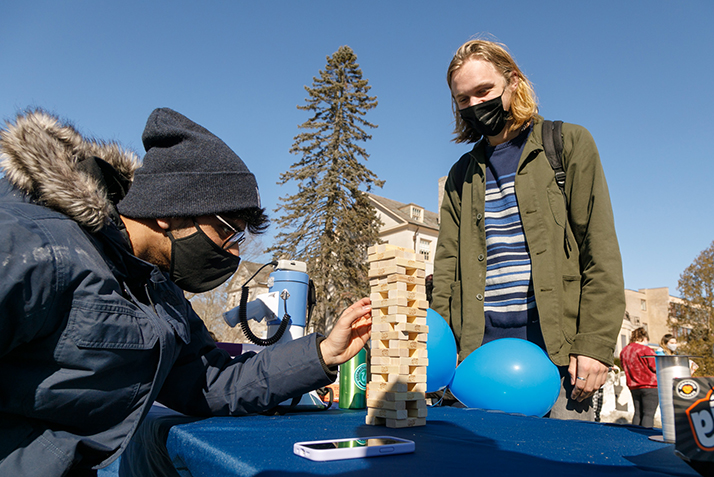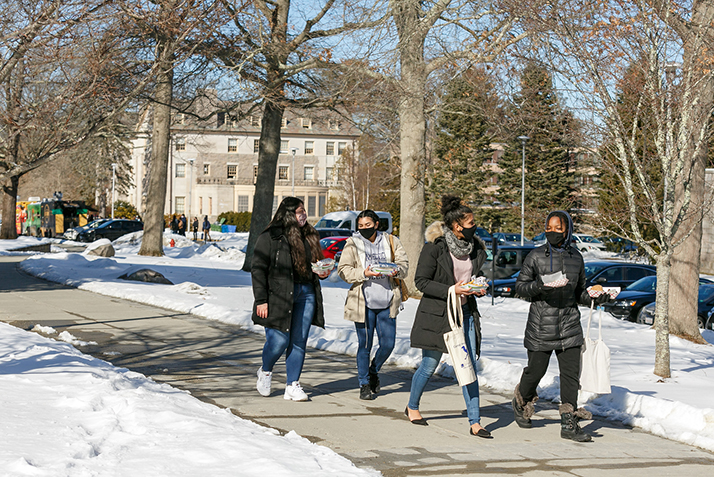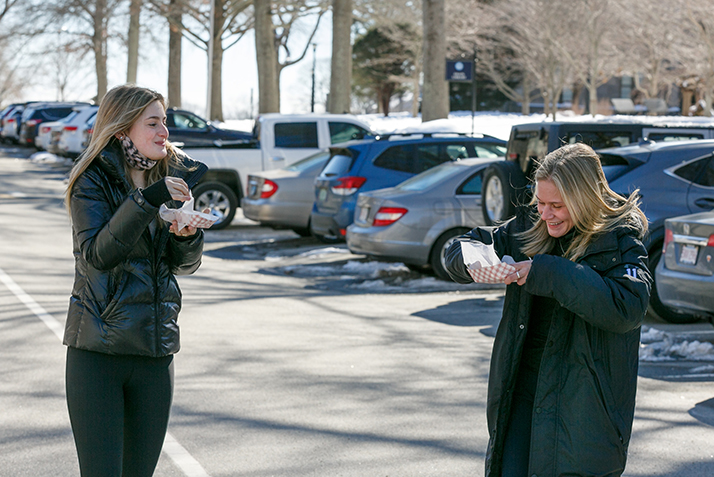
Conn goes green
College moves to its lowest COVID-19 alert level
Just a little more than two weeks after students returned to campus for the spring semester, Conn has transitioned to Alert Level 1, Green—the lowest COVID-19 alert level.
“Getting to this point represents a lot of hard work on everyone’s part, and I am grateful for the incredible support of our community,” said Dean of Students Victor Arcelus. “Our collective efforts to keep the virus off our campus through the onboarding process sets a strong foundation for a successful spring semester.”
Since Feb. 1, the College has administered nearly 8,500 COVID-19 tests to students, faculty and staff, with a remarkably low positive rate of 0.08 percent.
Prior to arriving at Conn for the spring semester, students isolated at home for two weeks and received a negative COVID-19 test. Once on campus, students followed an onboarding process that included a quarantine period and required three negative tests. During the onboarding period, classes were held remotely. In-person classes began this week, and students will continue to be tested twice weekly throughout the semester.
The Green status lifts some restrictions on indoor campus dining and visiting students in other residence halls, however the change does not represent a return to pre-pandemic behaviors. Everybody on campus is still required to wear masks, practice social distancing, and follow a variety of specific COVID-19 expectations.
To celebrate “going green,” free donuts and cider from Dude’s Donuts Truck were available in front of the campus Testing Center between 8:30 a.m. and 4 p.m. on Monday and Tuesday.
Caleb Gallagher ’23 said he is impressed with how quickly the College was able to move to the lowest alert level.
“I am blown away by the Conn community for doing such a spectacular job of protecting the common good of the students, faculty and staff. I am so proud to call myself a Camel,” he said.
Gallagher added that he has been enjoying the food trucks on campus and thinks they are a perfect way to celebrate. “Food is my love language,” he said. “The food trucks that have been on campus so far have been insanely good.”
Tether Preston ’22, who serves as a housefellow in a first-year dorm, said she is looking forward to visiting friends in other residence halls (with masks and in a socially distant manner), and hosting a greater variety of events for her residents.
“Having an in-person event in the house provides relief from zoom and computer screens and gets students far more engaged,” she said.
She added that Conn students take their Honor Code seriously and are willing to hold each other accountable for keeping the campus safe. “I believe that all students came back to campus knowing that things can be much more normal if we follow the guidelines closely,” she said.
At the beginning of the fall semester, Conn implemented a robust, twice-weekly testing and contact-tracing program that was able to slow the spread of the virus. More than 50,000 tests were administered over the fall with a positivity percentage of 0.23.
“It just became part of everybody’s week to go down to the testing center twice a week,” Arcelus said. “That allowed everyone to be able to engage with each other over the course of the semester. Knowing what the positivity rate was on our campus at any given time, it enabled us to hold in-person classes and have students participate in a wide variety of programs and activities. Our varsity athletes were also able to engage in in-person training, and ultimately we were able to do some intrasquad scrimmages.”
Conn’s COVID-19 testing program and other safety precautions have caught the attention of national media, like U.S. News & World Report and Inside Higher Ed, which highlighted Conn for pandemic response efforts that led to low infection rates and the ability to hold in-person classes and athletic training safely during the fall semester.






